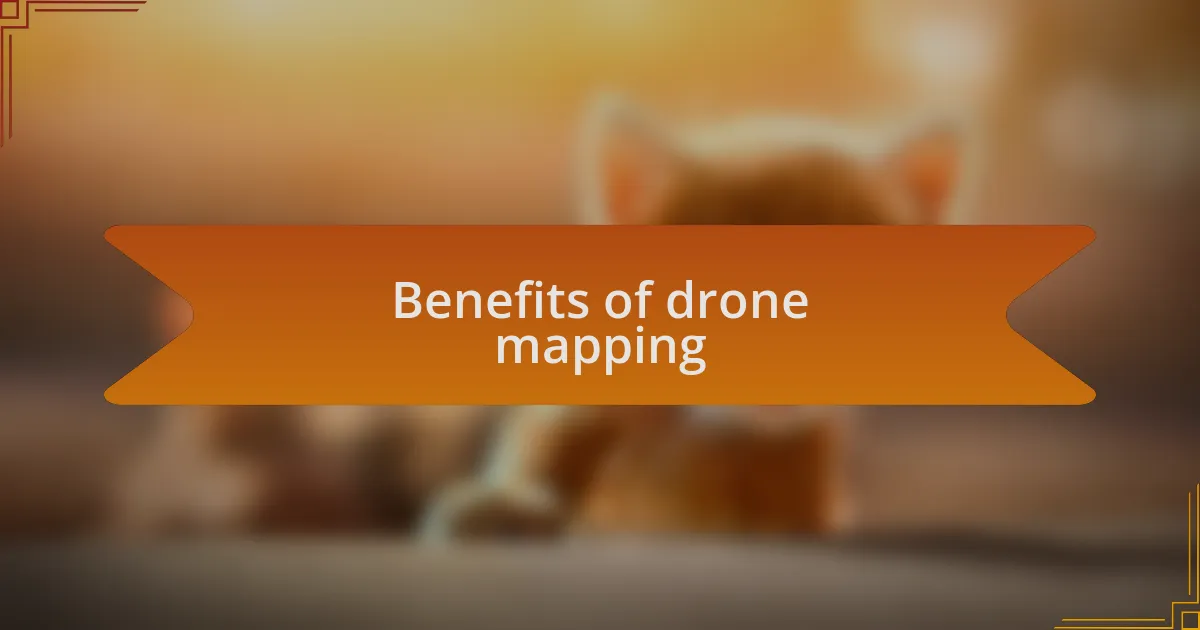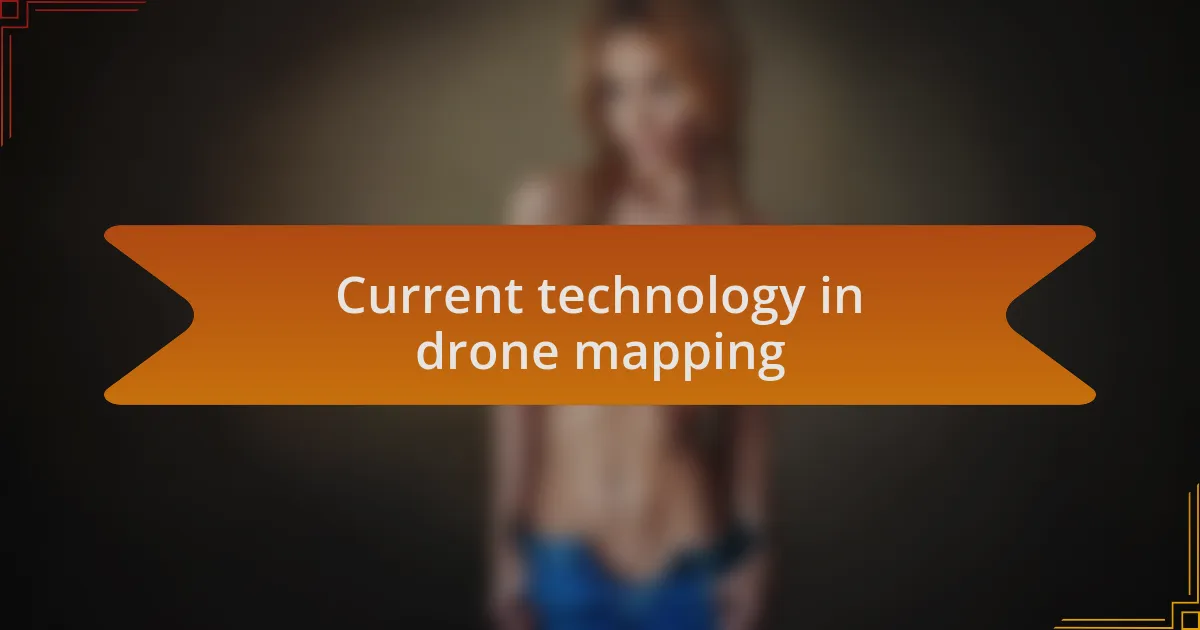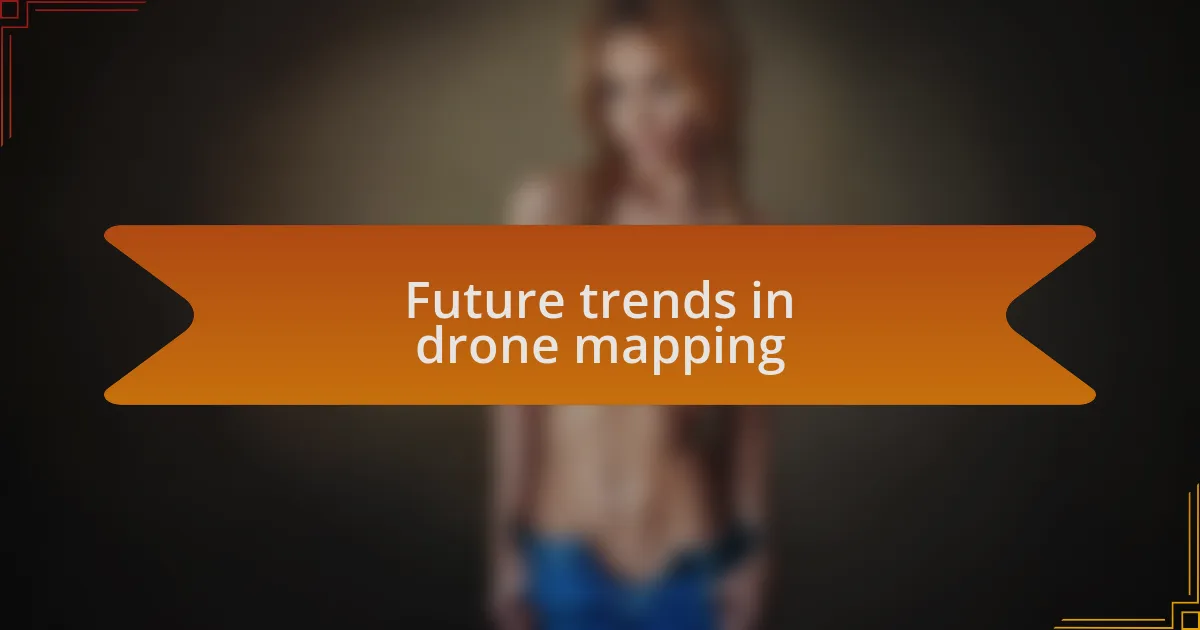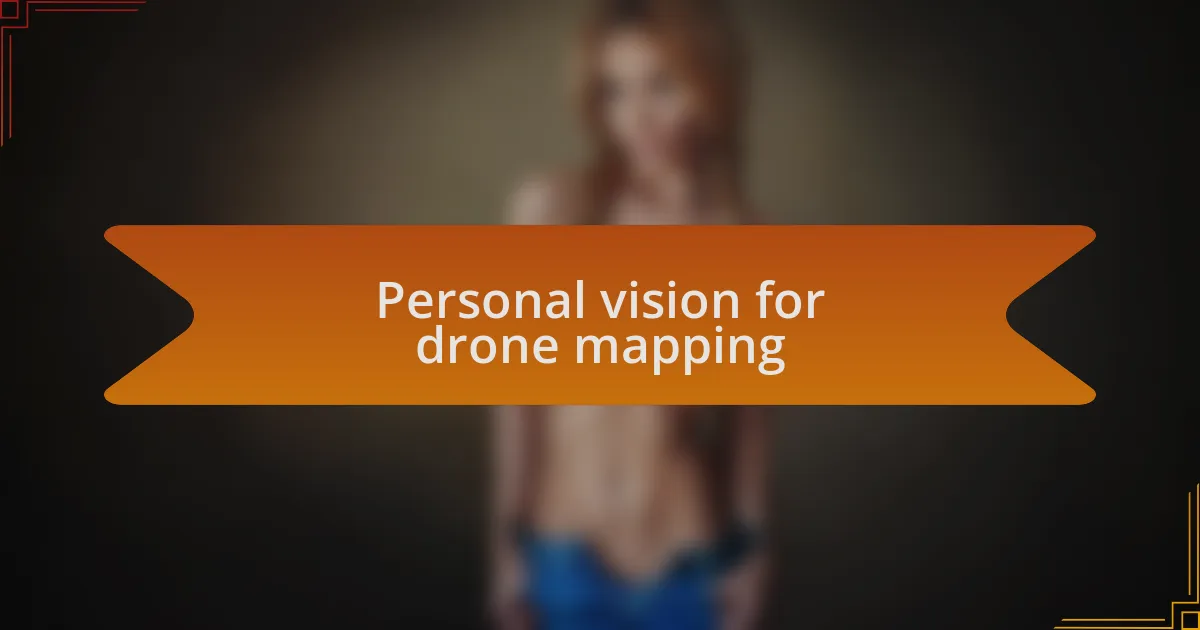Key takeaways:
- Drone mapping enhances efficiency, allowing projects to be completed significantly faster than traditional methods, impacting industries like agriculture and conservation.
- The integration of advanced technology, such as LiDAR and AI, is improving the precision of data collection and analysis, facilitating automated processes and better visualization.
- Future trends include the use of machine learning for predictive analysis, the deployment of drone swarms for large-scale mapping, and real-time data analytics to enhance immediate decision-making.
- Drone mapping has the potential to foster community engagement and sustainability by involving local residents in mapping projects and educational initiatives.

Overview of drone mapping
Drone mapping has revolutionized how we collect and analyze geographic data. These unmanned aerial vehicles (UAVs) allow us to access hard-to-reach places, capturing images and creating detailed maps with remarkable precision. I still remember the first time I witnessed a drone flying over a landscape, weaving effortlessly through obstacles; it felt like watching the future unfold right before my eyes.
One of the standout advantages of drone mapping is its efficiency. A project that would typically take days or weeks with traditional methods can now be completed in a matter of hours. Can you imagine the impact this has on industries like agriculture or conservation? I’ve seen farmers use drone mapping to assess crop health in real-time, allowing them to make data-driven decisions that save time and resources.
Moreover, the precision offered by drone mapping technology allows for finer detail in map creation, which is invaluable in various fields, from urban planning to disaster management. Just thinking about the possibilities brings a wave of excitement. The first time I explored a high-resolution map generated by a drone, it felt like stepping into a new dimension where every detail could tell a story. How can we not see this as a stepping stone to a more informed future?

Benefits of drone mapping
The cost-effectiveness of drone mapping is another compelling benefit worth noting. In my experience, using drones significantly reduces labor costs and the need for extensive equipment, which can be a game-changer for small businesses. Have you ever considered how this technology enables startups, especially in places like Zanzibar, to harness advanced mapping without a massive upfront investment?
Moreover, the speed at which data can be gathered and analyzed genuinely shifts how we approach planning and development. I remember attending a community meeting where a local conservation group shared drone-captured imagery illustrating deforestation. The immediate visual impact was startling, prompting a collective urgency to address the issue. Isn’t it amazing how visual data can mobilize communities toward action in ways that raw numbers just can’t?
Lastly, the accessibility of drone mapping opens opportunities for real-time data sharing and collaboration. During a recent project, I collaborated with local fishermen who utilized drone data to track fish populations; it was enlightening to witness how quickly they adapted the information into their practices. Isn’t it inspiring to think about these collaborative efforts enhancing sustainability and fostering innovation?

Current technology in drone mapping
Advancements in drone technology are revolutionizing the way we approach mapping. For instance, the integration of high-resolution cameras and LiDAR sensors allows for remarkably detailed topographic maps. I recall witnessing a drone pilot effortlessly create a 3D representation of an area in Zanzibar, revealing intricate landscape features that traditional methods often miss. Can you imagine the benefits of using such precision for conservation efforts or urban planning?
Furthermore, powerful software has emerged to process the massive amounts of data collected by drones. These tools enable users to analyze and create actionable insights from the data with minimal technical knowledge. Personally, I found it fascinating when a local architect used drone mapping software to visualize proposed projects, helping stakeholders grasp the spatial relationships and potential impacts. How do you think such visualizations could change the dialogue around development in rapidly changing environments?
You’re also seeing a trend towards automation and artificial intelligence in drone mapping. This technology allows drones to autonomously follow flight paths, reducing human error and increasing efficiency. I remember a project in which we deployed drones to monitor coastal erosion, and the automated flights provided consistent data collection over time. Isn’t it exciting to think about how these innovations might shape our understanding of evolving ecosystems in the future?

Future trends in drone mapping
As we look ahead, the role of machine learning in drone mapping is becoming increasingly prominent. I recently read about a project where algorithms analyzed drone imagery to predict changes in land use, which sparked my curiosity. Could you imagine the potential for urban planners to foresee community growth or degradation with such foresight?
The deployment of drone swarms is another emerging trend that excites me. These coordinated fleets can cover expansive areas in significantly less time, making large-scale mapping endeavors much more feasible. I have to admit, witnessing a demonstration of multiple drones working in unison was both mesmerizing and thought-provoking. How might this approach transform environmental monitoring or disaster response?
Additionally, the integration of real-time data analytics into drone mapping will bridge the gap between data collection and immediate action. For instance, I participated in an initiative where drone data was analyzed instantly to assess flood risks during a heavy rainstorm. It was astonishing to see how swiftly decisions could be made to protect vulnerable communities. Do you think this immediacy in addressing emerging threats will foster more proactive approaches to environmental challenges?

Personal vision for drone mapping
I envision a future where drone mapping becomes a cornerstone of sustainable development, especially in unique environments like Zanzibar. I recall a trip to the island, where the vivid landscapes inspired me. Imagine using drones to create detailed maps that help preserve these natural wonders while promoting responsible tourism. Could mapping not just inform, but also guide people toward more sustainable choices?
As I reflect on the potential of drone technology, I often think about its role in enhancing community engagement. For instance, envision local residents participating in mapping projects that highlight community resources or environmental concerns. The idea of empowering people to take part in shaping their own surroundings feels incredibly rewarding. Wouldn’t it be remarkable to see communities come together, using data to advocate for their needs?
Looking ahead, I also see drone mapping shaping educational initiatives. Take, for example, the possibility of students in Zanzibar engaging with drone technology to learn not just about geography, but also about conservation and urban planning. I once attended a workshop where young minds utilized drone imagery to envision their ideal neighborhoods. It was inspiring to witness their creativity. Will we soon see a generation that sees mapping not just as a tool, but as a pathway to positive change?